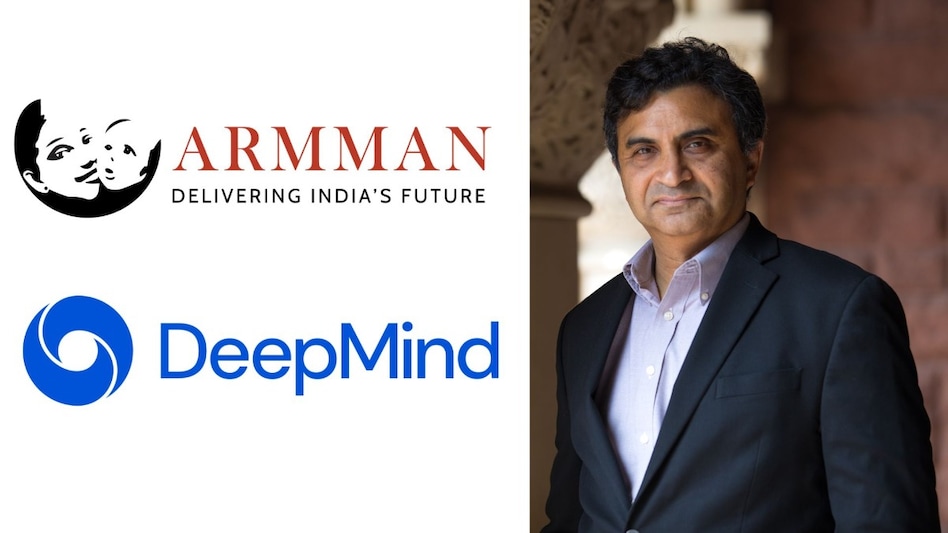 Dr Milind Tambe
Dr Milind Tambe
 Dr Milind Tambe
Dr Milind TambeIt’s easy to get lost in the clamour of generative tools and profit-driven innovation in current times. But beneath the noise, a quieter revolution is underway, one that aims not to disrupt industries but to save lives.
Leading this effort is Dr Milind Tambe, Director of AI for Social Good at Google DeepMind. In collaboration with ARMMAN, a Mumbai-based non-profit focused on maternal and child health, Tambe’s team is deploying cutting-edge machine learning models to tackle one of India’s most urgent public health crises: maternal mortality.
Speaking to me about the initiative, Dr Tambe’s calm clarity belied the complexity of the work his team is doing. “It all began with a conversation at a Starbucks in Mumbai,” he said with a smile. “Dr Aparna Hegde, ARMMAN’s founder, shared the challenges they were facing, especially with drop-off rates in maternal health programmes like mMitra. That conversation sparked a partnership that’s now changing lives across India.”
The Drop-Off Dilemma
ARMMAN’s mMitra programme had long aimed to deliver vital health information to expecting and new mothers through regular voice calls. But the data revealed a worrying trend: 30-40% of women were disengaging early, especially those most at risk. Tambe’s team stepped in to develop a predictive AI model that could identify these high-risk participants and enable targeted interventions.
“We were able to reduce the drop-off rate by about one-third for the most at-risk mothers,” Tambe explained. “More importantly, these women were significantly more likely to adopt healthier behaviours, taking iron and calcium supplements, attending check-ups, and even tracking their babies’ birth weights more accurately.”
A recent impact study confirms this. Among women flagged by the AI model for additional support, 22% were more likely to take iron supplements, 28% more likely to take calcium, and 9% better at recording infant health metrics.
Scaling Up with Kilkari
Buoyed by these results, the partnership expanded to ‘Kilkari’, a government-backed initiative delivering weekly health messages to pregnant and postpartum women across India. With over 60 million beneficiaries reached across 27 states, Kilkari is the world’s largest mobile-based maternal health information programme.
But unlike mMitra, Kilkari lacked detailed demographic data about its users. All the AI team had to work with was one behaviour: when a woman answered her phone.
“At first glance, it seems like very little to go on,” Tambe noted. “But we found patterns in this data. Some women consistently picked up in the morning, others in the evening. By clustering these behaviours, we could personalise call times to when each group was most likely to engage.”
The results from a pilot study in Odisha were striking. Optimising call times based on this behaviour alone led to a 12% improvement in pickup rates during certain time slots.
“It’s a small change with potentially huge implications,” he added. “Better pickup rates mean more women hear potentially life-saving messages.”
Lessons from the Field
For Tambe, the Kilkari and mMitra projects are more than technical success stories. They are case studies in how AI can be thoughtfully and responsibly integrated into public health infrastructure.
He distils the experience into three key lessons for other AI practitioners:
1. Deep Partnerships: “AI cannot be parachuted into communities. We needed ARMMAN’s on-the-ground insight, their call centre staff, and their medical expertise. It’s a true collaboration.”
2. Interdisciplinary Teams: “We brought together computer scientists, public health experts, and social scientists. AI alone doesn’t solve problems, people do.”
3. Frugal AI: “We had to adapt to limited data and compute resources. This is not a Silicon Valley problem set. We built lean, effective models that could run in resource-constrained environments.”
This frugality and respect for context also bolsters data privacy. “In Kilkari, we don’t use any personal data: no age, income, or education. It’s purely behavioural, anonymised, and private,” Tambe emphasised.
A Glimpse of AI’s Broader Potential
Though his team remains focused on scaling Kilkari, Tambe sees vast potential for similar AI interventions globally. From vaccine delivery to emergency response planning, he believes AI will fundamentally reshape public health.
“Health systems everywhere face constraints, whether it’s workforce shortages, limited hospital beds, or insufficient outreach capacity,” he said. “AI can optimise these systems, help prioritise where to send a nurse, when to schedule a call, or how to structure a campaign. It’s about doing more with less.”
Dr Aparna Hegde, ARMMAN’s founder, echoed that sentiment in the official media note: “AI has proven to be a force multiplier. We’re not just addressing a health challenge, we’re contributing to India’s national goals to reduce maternal and child mortality. That fills me with immense hope.”
Tambe is similarly optimistic. “There’s still work to do, but we’ve already seen what’s possible when thoughtful technology meets compassionate fieldwork. AI, used right, is a profoundly human tool.”
As India races to meet its Sustainable Development Goals, the marriage of AI and public health may prove not just advantageous but essential.
For Unparalleled coverage of India's Businesses and Economy – Subscribe to Business Today Magazine